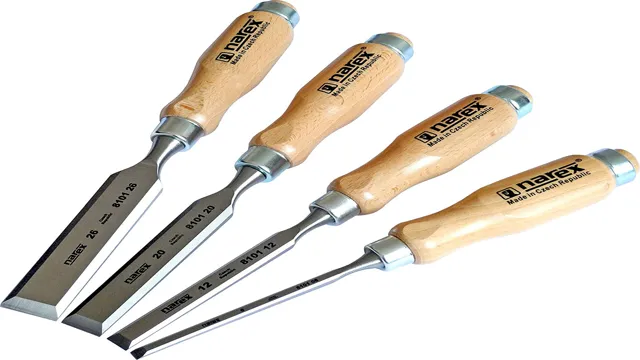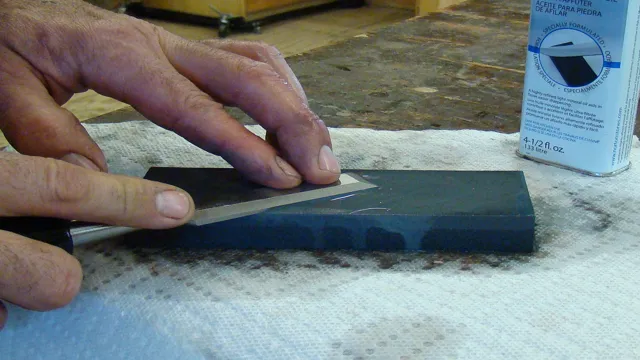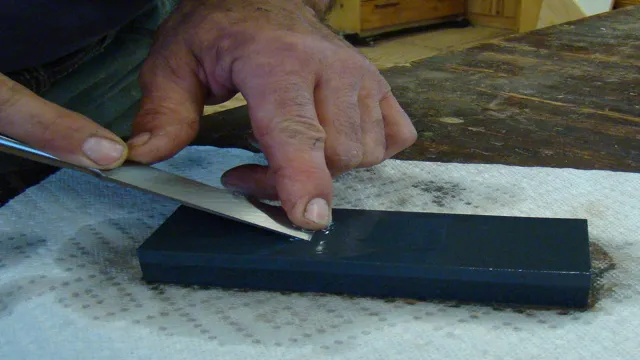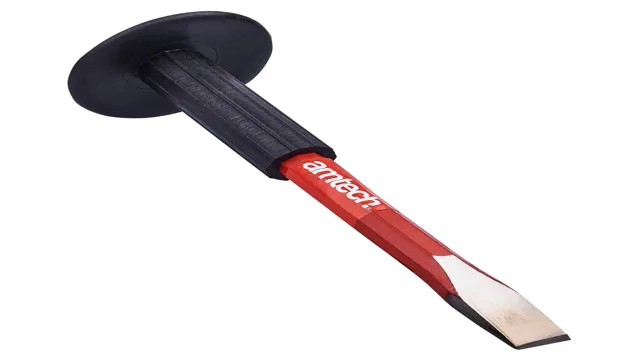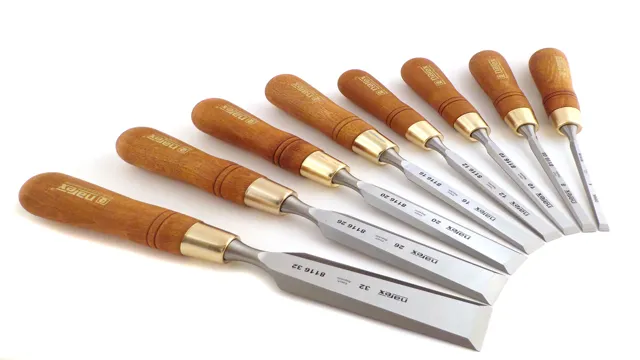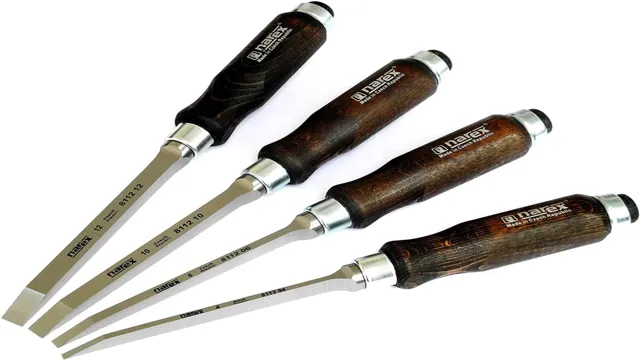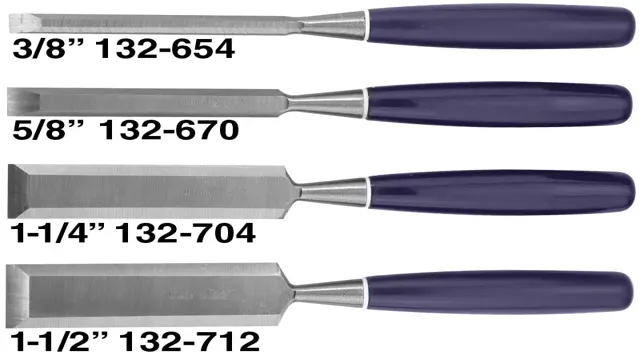What Angle Do You Sharpen Wood Chisels? Top Tips and Techniques to Achieve Perfect Results
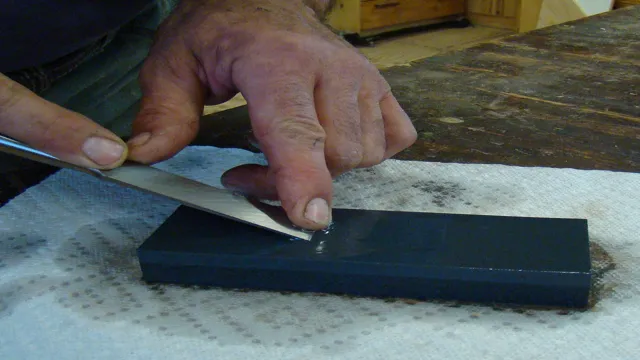
Are you looking to improve the performance of your wood chisels? One key factor to consider is the sharpening angle. Finding the right angle can greatly impact the quality of your cuts and the ease of your work. But, with so many options to choose from, it can be overwhelming to determine which angle is best for your chisels.
Think of sharpening angles like the gears on a bike. You wouldn’t use the same gear for going up a steep hill as you would for cruising downhill. Similarly, different angles work better with certain woods and types of cuts.
By understanding the nuances of sharpening angles, you can optimize your chisels for maximum efficiency and accuracy. In this blog, we’ll look at some common sharpening angles for wood chisels and discuss how to determine the right angle for your needs. Whether you’re a beginner or a seasoned woodworker, unlocking the power of sharpening angles can take your craft to the next level.
So, let’s dive in and explore the world of woodworking angles!
Introduction
If you’ve ever wondered what angle to sharpen wood chisels, you’re not alone! The truth is, there is no one right answer to this question. The best angle for your wood chisel will depend on a variety of factors, including what type of wood you’re working with and the type of chisel you’re using. Generally speaking, a good angle for a wood chisel is between 25 and 35 degrees.
However, depending on the type of wood and the type of chisel, this angle may need to be adjusted. The key is to experiment with different angles until you find the one that works best for you. Remember, sharpening your chisel is an important step in ensuring a successful woodworking project.
So take the time to find the right angle, and you’ll be rewarded with cleaner cuts and more precise results.
Explanation of Sharpening Angles
When it comes to sharpening, the angle at which you sharpen your blade is crucial. The sharpening angle refers to the angle between the blade edge and the sharpening surface, and it can greatly impact the sharpness and durability of your blade. Choosing the correct angle will depend on the type of blade you are sharpening and its intended use.
For instance, a kitchen knife might require a different angle than a hunting knife. To ensure that your blade performs optimally, it’s essential to choose the right angle and maintain consistency in your sharpening technique. So, next time you’re sharpening a blade, remember that the sharpening angle is just as crucial as the sharpening tool you use.

Importance of Sharpening Angles on Chisels
Chisels are essential tools for any woodworker, craftsman or DIY enthusiast. They come in different sizes and with varying cutting edges. The sharpening angle on a chisel is of utmost importance when it comes to its cutting efficiency.
The sharpening angle refers to the angle formed between the chisel’s bevel and the sharpening surface. Sharpening at an angle that is too steep may dull the edge quickly, while too shallow may reduce cutting efficiency. Finding the ideal sharpening angle requires practice and experimentation with different angles until the desired performance is attained.
Sharpening a chisel to the right angle ensures precision and accuracy when working with your chisel, making woodworking projects simpler and more efficient. So, if you want to get the most out of your chisels, it is critical to pay attention to the sharpening angles and get them right.
Sharpening Methods for Wood Chisels
When it comes to sharpening wood chisels, one common question is what angle should be used for the sharpening process. The angle that you sharpen your chisel at can greatly affect its performance and longevity. For most woodworkers, a bevel angle of anywhere between 25 and 35 degrees is ideal.
However, the specific angle can depend on the type of chisel being sharpened and the type of work it will be used for. For example, a narrower bevel angle may be best for finer, more detailed work while a wider angle may be better for heavier, rougher work. It’s important to also consider the type of material the chisel is made from and the type of stone or sharpening tool being used.
Regardless of the specific angle chosen, the process should always be performed with care and attention to detail.
Water Stones
When it comes to sharpening wood chisels, one of the most popular methods is using water stones. Water stones are known for producing a fine edge on tools and are relatively easy to use. To get started with water stones, it’s important to first soak them in water for a few minutes.
This will allow the stone to absorb enough water to create a consistent slurry when sharpening. Once soaked, you can begin to sharpen your chisels by holding them at a consistent angle against the stone and moving them back and forth in a circular motion. It’s important to use light pressure and keep the stone wet to prevent damage to the chisel and to ensure the stone is working effectively.
After a few passes, you can check your progress by feeling the edge of the chisel. If it’s still dull, continue to sharpen until you achieve a fine edge. With practice, using water stones can become an easy and efficient way to maintain your wood chisels.
Oil Stones
Oil stones are an effective sharpening method for wood chisels, providing a smooth and polished edge. These stones are made of natural materials like Novaculite, a type of sedimentary rock found in Arkansas. To use an oil stone, lubricate it with a small amount of honing oil, then place the chisel blade at a 20-degree angle on the stone and move it back and forth in a circular motion.
This process removes any nicks or burrs from the blade while creating a keen edge. Individuals who prefer woodwork as their hobby or profession often use oil stones due to their reliability and ability to maintain a sharp edge. So, if you are looking for a simple and effective method for sharpening your wood chisels, give oil stones a try.
You may be surprised at how quickly you can achieve a sharp edge, and how easy it is to maintain.
Diamond Stones
Diamond stones are an essential tool for sharpening wood chisels. While there are different methods for sharpening, using diamond stones is one of the most efficient and effective ways to achieve a sharp edge. Unlike traditional bench stones, diamond stones are much harder, meaning they can quickly grind away metal material and expose fresher, sharper steel underneath.
Diamond stones come in a variety of grit levels, so it’s essential to choose the right one for your needs. Coarser grits are best to remove significant nicks and dullness, while finer grits are perfect for honing the blade and achieving a razor-sharp edge. Using a diamond stone also requires less oil lubrication than a traditional bench stone, making it a more environmentally-friendly option.
Overall, using diamond stones for sharpening wood chisels offers a fast, precise, and hassle-free sharpening experience that every woodworker should consider.
Recommended Sharpening Angles for Wood Chisels
If you’re a woodworker, you know that having a sharp chisel is essential for creating clean and precise cuts. But what angle should you sharpen your wood chisels at? The answer isn’t a one-size-fits-all approach. It depends on the type of wood you’re working with, the type of chisel you’re using, and the type of cut you’re making.
Generally, a bevel angle of 25 to 30 degrees is a good starting point for most wood chisels. But if you’re working with hardwoods, you may want to increase the angle to 35 degrees or higher for better durability and edge retention. On the other hand, if you’re working with softer woods, a lower angle may be more appropriate.
The key is to experiment with different angles and find what works best for you and your woodworking projects. So, what angle do you sharpen your wood chisels at? It’s up to you to find out!
Standard Angle
As a woodworker, your chisels are one of the most important tools you’ll use, and keeping them sharp is crucial for achieving precise cuts and a smooth finish. When it comes to sharpening your chisels, the standard angle range is between 25 and 35 degrees. In general, a lower angle will produce a sharper, more delicate edge that is great for carving and detail work, while a higher angle will result in a more durable but less sharp edge that is better suited for heavier, rougher work.
However, the ideal angle for your chisels will depend on your personal preferences and the type of wood you’re working with. Try experimenting with different angles and see which one works best for you. Remember to always sharpen your chisels regularly to maintain their sharpness and longevity.
Happy woodworking!
Low-angle
When it comes to sharpening wood chisels, it’s important to know the right angle to use for the job. One recommended angle is the low-angle sharpening technique. This involves sharpening the bevel at a low angle, around 20 to 25 degrees, which creates a more acute cutting edge.
The benefit of using a low-angle sharpening approach is that it puts less stress on the blade and allows you to exert less pressure when using the chisel. Additionally, the sharper edge is ideal for working on harder woods and can help prevent tearing or splitting of the wood fibers. Keep in mind that the low-angle technique may not be suitable for every job, so it’s important to experiment and find what works best for your specific needs.
By mastering the low-angle technique and incorporating it into your sharpening routine, you can ensure that your wood chisels remain sharp and ready for any woodworking project.
High-angle
Sharpening angles for wood chisels are a crucial aspect of woodworking, and there are various options to consider. High-angle sharpening is one such option that many woodworkers prefer. High-angle sharpening angles range from 30 to 40 degrees and are ideal for softwood and end grain, providing a more refined, clean cut.
This high-angle approach is effective for softer wood that tends to splinter easily, making it more precise and sharp. However, it’s crucial to understand that higher angles may result in a weaker edge. Therefore, it is essential to consider the type of wood and the design of the tool before selecting the right angle for sharpening.
By selecting the right sharpening angle, you can ensure your wood chisels easily cut through timber, providing the versatility needed for various carpentry projects.
Conclusion
In conclusion, the angle at which you sharpen your wood chisels is crucial in achieving clean, precise cuts. It’s not just about honing your craft, but also finding the right angle that works for you. So, whether you prefer a low-angle or high-angle approach, just remember that every woodworker has their own unique angle on chisel sharpening.
“
FAQs
What is the recommended angle for sharpening wood chisels?
The recommended angle for sharpening wood chisels is around 25-30 degrees.
Can you sharpen wood chisels with a sharpening stone?
Yes, sharpening stones are a great tool for sharpening wood chisels.
How often should you sharpen your wood chisels?
It’s recommended to sharpen your wood chisels after every use or at least once a week if you use them frequently.
Should you use a honing guide when sharpening wood chisels?
Yes, a honing guide ensures that you maintain the correct angle while sharpening your wood chisels.
What grit should you use when sharpening wood chisels?
It’s recommended to use a coarse grit (around 220) for shaping the edge and a fine grit (around 1000) for honing.
Are there any safety precautions to take when sharpening wood chisels?
Yes, always wear protective gear like gloves and eye goggles and make sure to keep your fingers away from the sharp edge of the chisel.
Can you use a bench grinder to sharpen wood chisels?
While you can use a bench grinder for sharpening, it’s not recommended as it can easily overheat the chisel and ruin the temper. Use a sharpening stone instead.

